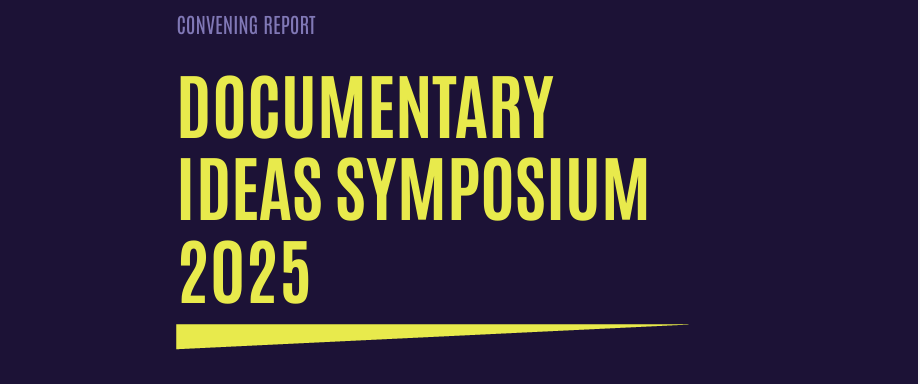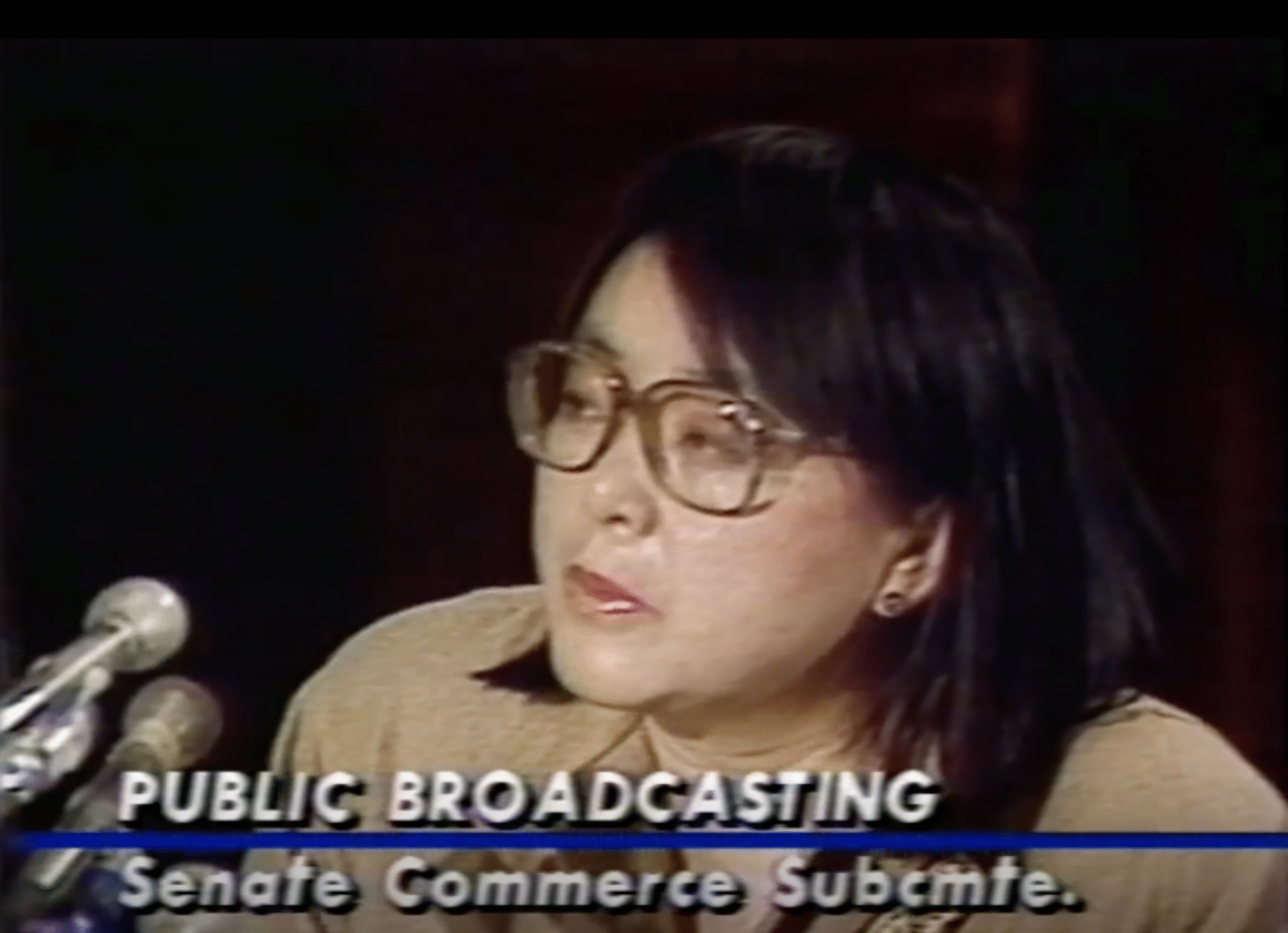
Reports & Papers
Documentary at Risk: Strategies for Ethics, Sustainability, and Innovation in a Time of Disruption
Commentary

The current administration’s assault on public media, including the plan to claw back previously approved $1.1 billion to the Corporation for Public Broadcasting, is part of a broader attack on basic press freedoms. Taken together with the lawsuits against for-profit news outlets and the attacks on educational and cultural institutions, this is cancel culture on steroids.
While most of the efforts to defend the PBS side of public media have focused on “Saving Elmo,” independent documentaries are central to PBS’s mission and have played a critical role in engaging a wide segment of the American public.
Nearly 40 years ago, a broad and diverse coalition of independent filmmakers successfully waged a fight to build a space for independent film that would use the public infrastructure to fund and distribute independent work.
In November of 1987, as Washington was gripped by an unexpected snowstorm, the independent filmmaker Loni Ding testified before a Congressional subcommittee on the future of public broadcasting. Ding’s films would later play a key role in the passage of legislation granting Japanese Americans reparations for their forcible relocation and incarceration during World War II. Along with many independent documentary filmmakers, my own career has been shaped by and supported by what Ding and her colleagues were able to achieve.
“I am myself an independent producer,” Ding testified at the time. “I’m here…speaking on behalf of approximately 10,000 such producers…. We are a microcosm of this country…. We simply are arguing against giving market forces complete free reign.”
The 1980s were a period of big and disruptive technological change in media, with cable and home video on the rise. “There were all these new delivery systems and technologies, and in past times they would have been regulated,” Lawrence Sapadin, a key organizer in the coalition of independent filmmakers and at the time, the head of the Association of Independent Video and Filmmakers (AIVF), told me in an interview. “There would have been a public interest element in all of them. Under Reagan, it was just wild west capitalism.”
The consensus among the independent filmmakers was clear. “We can’t rely on the marketplace for everything,” Lawrence Daressa, then co-director of California Newsreel, a media nonprofit, explained. Daressa and the other independents asserted that since the creation of public media in 1967, there had been an obligation to support independent producers in ways that had never materialized.
Then, as now, there were debates about who and what constituted an “independent” producer. Filmmaker Pamela Yates provided clarity at a public hearing. “Very simply stated,” she explained, “an independent producer is someone who has budgetary and content control over their program.” Filmmakers working for “an executive producer who has final cut over the programs, as well as budgetary control” couldn’t really be considered independents in that context, she pointed out.
Within one year of the 1987 hearings, and capping roughly a decade of organizing, independents won a key victory, establishing one of the most durable pieces of public media architecture for independent films—the Independent Television Service or ITVS. President Reagan signed into law the Telecommunications Act of 1988, writing to a colleague afterwards, “the Nation’s public broadcast system provides an important service to Americans.”
Remarkably, in that same year, POV, one of television’s longest-running showcases for independent nonfiction films, was also created.
But almost immediately, both ITVS and POV faced backlash. And there are echoes in the present-day efforts to remove films and materials that are deemed controversial by outside critics, typically acting in bad faith, or worse from within public media.
For example, even before the 1991 POV broadcast of Marlon Riggs’s now legendary Tongues Untied, a number of public television stations refused to air the film. During the 1992 presidential campaign, the conservative pundit Pat Buchanan, who was seeking the Republican nomination, used clips of the film to attack George H. Bush, on the grounds that public tax dollars were being spent on promoting pornography and immorality.
Riggs and supporters, including series POV creator, Marc Weiss, pushed back against these attacks, but some of the pushback came from within public media. “Sandwiched uncomfortably amidst this improbable collection of censorship co-conspirators,” Riggs later wrote, “was a dismaying number of U.S. public television executives. The broadcasters, most of whom had the sense not to object to homosexuality per se, nonetheless cited the ‘offensive language’ of Tongues Untied and its affront to ‘community standards’ as justification for banning the work or scheduling it in the wee hours of the night.”
Similarly, early into ITVS’s tenure, a series it produced, “TV Families,” came under fire for, among other things, programming an early short by filmmaker Todd Haynes “which provoked conservative ire for depicting queer desire.” The backlash even came from other public television producers. “The problem with ITVS,” a producer named Peter Rosen told The New York Times at the time, “is that the shows are so poorly made that they’re embarrassing for PBS to put on the air.”
Since then, ITVS has funded over 1,400 projects and racked up numerous industry recognitions, including Emmys, Peabodys, and Academy Award nominations. It has also functioned as a launching pad for new filmmakers.
“There’s an ITVS diaspora,” Jon Else, veteran documentary filmmaker and recipient of a Lifetime Achievement Award at the 2025 News & Documentary Emmy Awards recently explained. “There’s probably thousands of filmmakers, documentary makers that have at some point gone through ITVS, either as producers, directors, or editors.”
Along with key partners such as the member organizations of the National Multicultural Alliance, ITVS has served as a core driver of new voices in the public media system, even when the system has been slow to embrace change. Yet, despite the many challenges for independents working within the system we have understood that ceding ground on public media, for all its flaws, would be a form of capitulation and a blow to free speech.
“Saving public media means saving one of the largest and most consistent distributors of documentaries by and about people of color in the U.S.” Loira Limbal, President and CEO of Firelight Media, which is a complimentary engine for supporting new filmmaking and producing talent, explains in an open letter. “It means ensuring that all residents, regardless of income or geography, can access timely and trustworthy programming.”
As the general public, elected officials and philanthropy step up to defend public media, the system itself must also evolve. It will benefit from fresh approaches and forward-thinking leadership. To do this, independents will need to play a key role in shaping that future, as they did nearly 40 years ago.
Reflecting on the victory of independents, Loni Ding said it best:
“We had a claim upon the public money, we had a claim upon the public interest, so it was necessary to translate what our purposes and functions were into those terms and go do the political work.”

Reports & Papers

Reports & Papers

Commentary